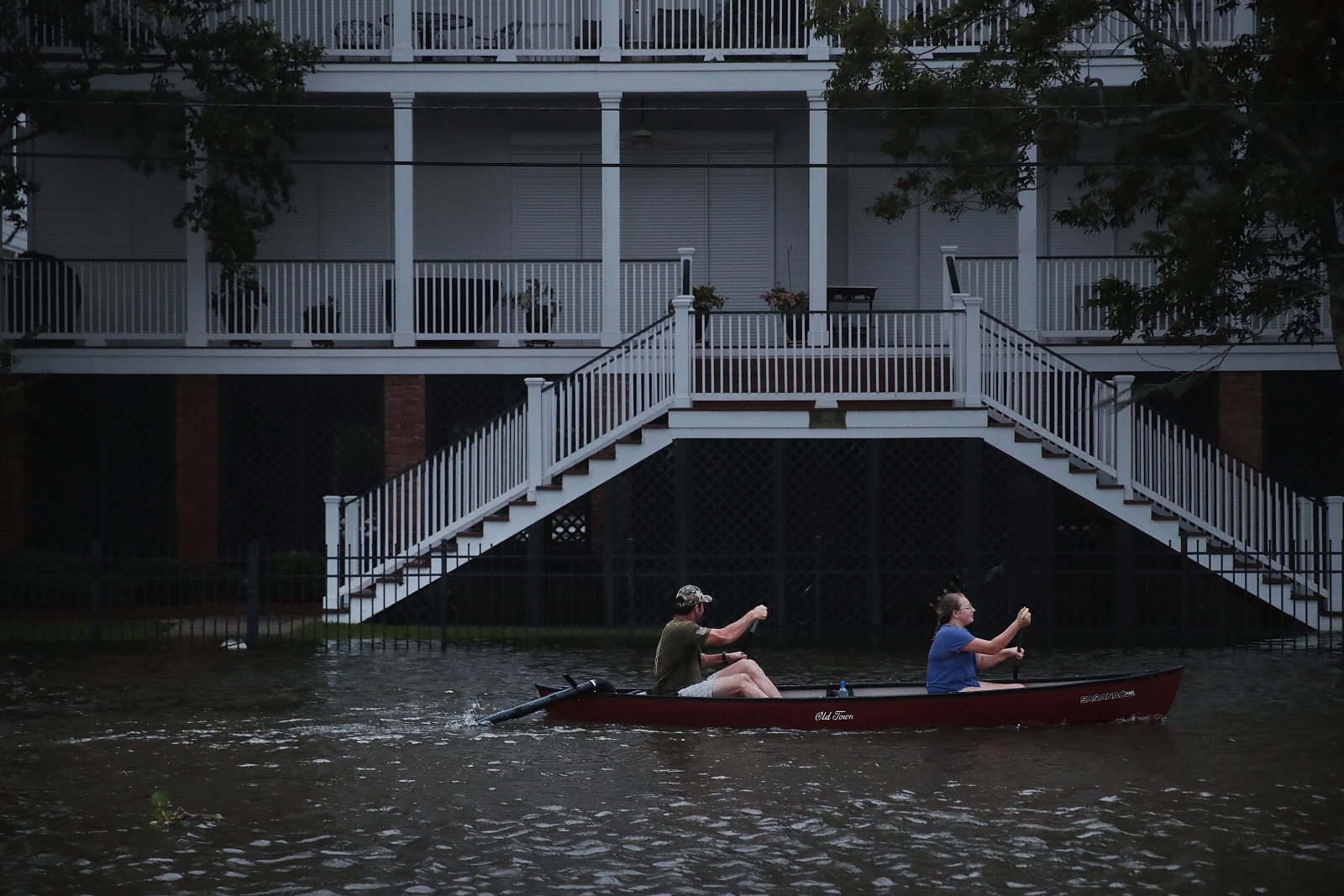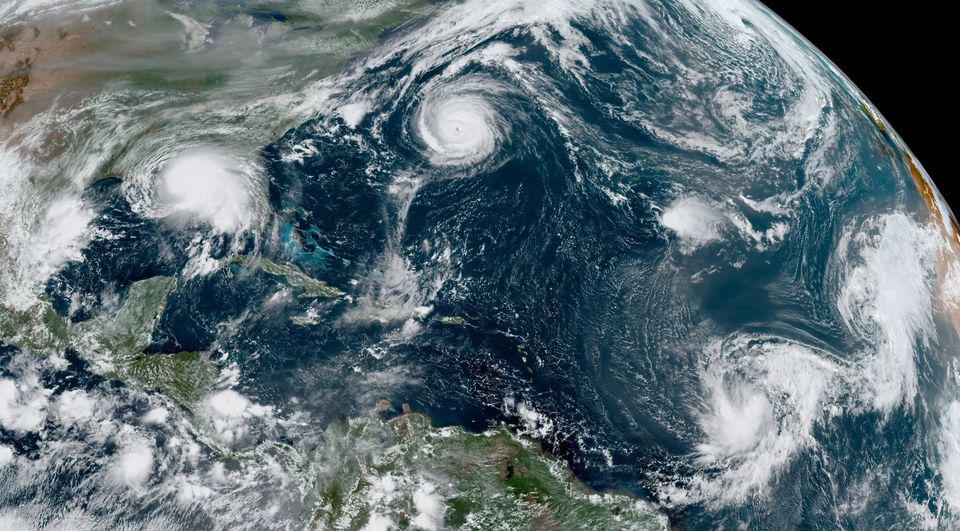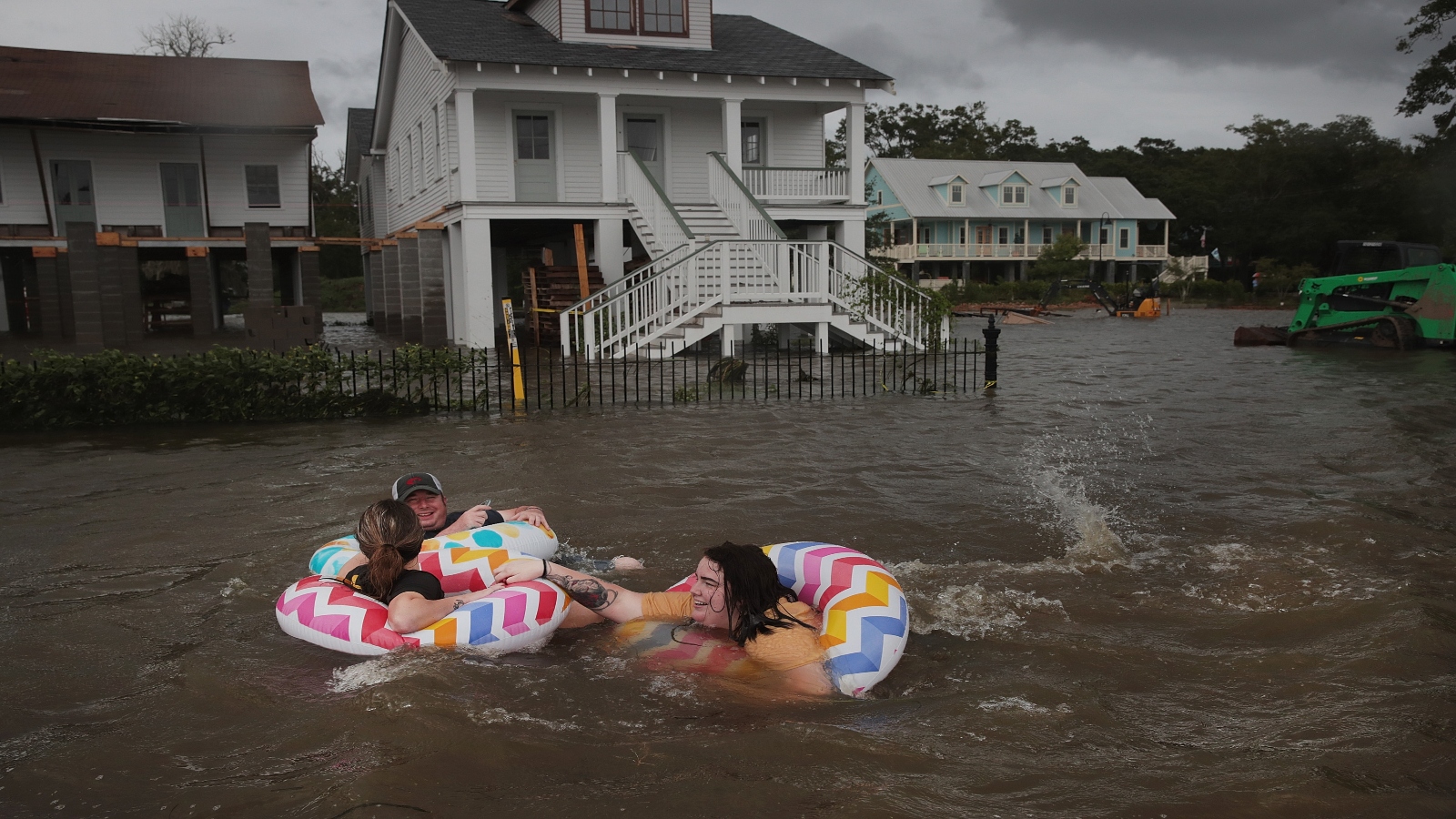Two years ago, Chris Dailey decided he wanted to live higher up off the ground. Dailey, 53, had lived in the Shore Acres neighborhood of St. Petersburg, Florida, for almost 30 years. His house had almost flooded four times during that span. Plus, Dailey’s flood insurance costs were steep: He was paying $2,000 a year to purchase insurance from the Federal Emergency Management Agency, or FEMA.
Dailey bought a lot down the street, farther from the water, and — on the advice of his insurance agent — built a new house that was elevated 16 feet above the neighborhood flood level, with only a garage on the first floor. The house was high enough to stay dry even during large floods, and its flood insurance premiums reflected this fact: Dailey would now pay just $500 a year.
Last summer, though, he got a rude awakening. His insurance agent called him up and told him that FEMA had just debuted a new system for calculating flood insurance rates. His premiums would soon increase to around $5,000 a year.
“It was a bait and switch,” Dailey told Grist. “I was playing by their rules by building a compliant house. And now they yanked the rug out from underneath me.”
Dailey was already halfway done building the new house, and it was too late to turn back. He dropped his policy and didn’t acquire a new one — he had paid off the house, so he wasn’t technically required to carry insurance. If a flood overwhelms his new property, he’ll be on his own.
This month marked the full rollout of Risk Rating 2.0, the federal government’s new system for calculating flood insurance rates. The system, administered by FEMA, aims to fix long-standing issues in the beleaguered National Flood Insurance Program, or NFIP, shoring up the public insurance program’s shaky finances and making prices fairer for its millions of customers. As the program takes effect, a few trends are becoming clear: Homes that are closest to the water, and those in hurricane-prone southern states like Florida, are poised for massive premium increases.
As a result, many homeowners who live closest to rivers and coastlines will find themselves with new, sky-high insurance costs even if they elevate their homes or take other preventative measures. Over the long term, these cost increases could spell disaster for low-income homeowners who can’t afford pricier insurance, and for future growth in the riskiest housing markets.
David Maurstad, the chief executive of the National Flood Insurance Program, defended the system, saying that policyholders like Dailey were paying far less than they should have, and getting elevation discounts that weren’t matched to their true risk.
“The old rating methodology was antiquated and didn’t reflect the true risk of a structure,” he told Grist.
Congress created the National Flood Insurance Program in the late 1960s to protect floodplain homeowners from risks that private insurers didn’t want to cover. The original goal of the program was twofold: first, save the federal government money by having homeowners in risky areas finance the cost of rebuilding their homes after floods; second, discourage people from moving to these areas by making it mandatory for most homeowners to carry flood insurance policies.
A number of constraints have plagued the program for years. Congress required the NFIP to offer insurance at “reasonable” rates, so there are limits on how much the program can charge, even where risks have grown exceedingly large. On the other hand, even these subsidized costs are more than many low-income homeowners can afford, which means there are millions of people who should have insurance but don’t. Furthermore, the program calculated premiums based on a rudimentary mapping system that didn’t account for the design of local streetscapes, or for a home’s specific position within a floodplain.
FEMA doesn’t have the authority to alter the basic financial structure of the NFIP — that’s up to Congress, which has long dithered on changing the program — but the agency does have the authority to revamp the actuarial system for calculating premiums. Risk Rating 2.0 does just this, setting prices using a complex algorithm that considers a home’s specific position within a floodplain, its position on the street, the cost of replacing it, and other local factors including tide dynamics. The idea is to shift the risk burden onto the NFIP policies that face the worst risk from flooding, giving cost relief to customers who are overpaying for their risk right now.
When FEMA rolled out the revision last year, agency officials said that most NFIP customers would see small rate reductions or very minor increases, so that the vast majority of policies would stay more or less the same. In Florida, for instance, some 20 percent of policyholders will see rate reductions, while around 70 percent will see policies increase by between $0 and $120 per year. A small minority of homeowners, though, will see premiums rise by thousands of dollars over the course of the next five years until their insurance policies reflect the true riskiness of their homes. (The system caps annual rate increases for existing policies at 18 percent per year, and FEMA says policies max out at around $12,000.)
Dailey is one of these homeowners, as are many of his neighbors in Shore Acres and other parts of St. Petersburg. Around one in five homes in the area are poised to see their policies increase by more than $240 each year, according to FEMA data. Dailey’s insurance agent, Jake Holehouse, said that around 80 to 90 percent of his clients’ flood policies are seeing increases, and many of those increases are in the thousands of dollars.
NFIP’s Maurstad said the new system offers consumers more clarity about their rates, since it establishes a definitive premium price for each property, rather than increasing rates year after year in perpetuity.
“Have [policyholders] call up their auto insurance company and ask them what their auto premium is going to be ten years from now,” he said. “They won’t get an answer. We’re trying to provide a signal of what the full risk rate of the property is.”
FEMA’s guidelines for the new system say that a house elevated 5 feet above the floodplain can receive premium discounts of up to 40 percent, but Holehouse said such discounts still aren’t enough to make policies manageable for many people. Homeowners might save some money by elevating, but they’re still paying far more than they ever thought they would.
Maurstad said that policyholders who are confused about why their rates are now so high may be “misunderstanding what their pricing has been over the course of the last number of years” — in other words, they’ve grown accustomed to a subsidy that didn’t match the riskiness of their property.
“Elevating the structure is still very significant, and elevating the structure will reduce premiums,” he said. “It’s a powerful factor, but it’s only one factor.”
Holehouse said many of his customers are planning to cancel their NFIP policies and purchase policies from the unregulated private market, or go uninsured like Dailey and hope they don’t flood. Private flood insurance companies have gobbled up more market share in recent years as NFIP premiums have risen, but there’s very little accountability over the way they set their premiums or manage their risk pool, and thus no telling how these insurers would hold up after a major storm event.
Maurstad said that the NFIP expects some consumers to consider the private market after reviewing their new rates, but said he’s “hopeful that people will think about the value associated with the flood insurance, and the ramifications if they don’t have the coverage they need.”
A similar trend is emerging in Louisiana, where thousands of homeowners have used FEMA grant programs to elevate their homes in recent years. Roderick Scott, a flood mitigation consultant who lives on the north shore of Lake Pontchartrain in the town of Mandeville, says that many of his neighbors are seeing their premiums rise from a few hundred dollars a year to a few thousand, even if their homes are elevated several feet above the floodplain. He has helped elevate more than 6,000 homes — many of which are now set to pay close to what they would have if they’d never made any improvements at all.

In other parts of the country, trends are murkier. Julie Nucci, who lives in the upstate New York village of Owego, is in a situation much like Chris Dailey’s. After her historic Greek Revival home flooded in 2011 during Tropical Storm Lee, Nucci elevated it by 4 feet using money from a FEMA grant program and some of her own money as well. Her annual premium went from $1,800 down to $372, and her house was cited by the National Parks Service as an example of how to elevate a historic structure. Under the new system, her premiums will balloon to $2,900 a year.
“They changed the rules on me, and that’s not fair,” said Nucci. Now, she argues, there’s far less incentive for her neighbors to elevate their homes. “I want the rest of my village to elevate. I want my beautiful, historic village to survive, and FEMA is telling my village: We want you to leave.”
Maurstad said that the new rating engine allows FEMA to tweak insurance rates over time, which should enable the agency to smooth out any issues in the pricing system.
“If situations surface where we’ve got to further refine and improve the program, we’ve committed to do so,” he told Grist.
In coastal Virginia, on the other hand, many homeowners who paid a fortune for insurance under the old system are seeing massive premium discounts, according to Mike Vernon, a flood mitigation consultant who works in the city of Virginia Beach.
“I’m losing almost $40,000 this quarter in renewable premiums on structures that have no business seeing their premiums reduced,” he told Grist.Many of his clients were paying thousands of dollars a year to insure homes that were just a few feet from the ocean, but the new system has chopped their premiums down to just a few hundred dollars a year.
According to Vernon, the new algorithm seems to place a lot of weight on what region of the country a home is in, so that high-risk homes in Virginia Beach cost less to insure than moderate-risk homes in Florida. The old system encouraged homeowners to mitigate risks by offering them steep discounts for installing flood vents and elevating homes, he said, but the new one won’t bring as many clients to the table.
Maurstad said that a number of factors could account for the regional differences. Some regions, for instance, tend to have older and smaller homes that are now seeing premium reductions. The new system also offers more nuanced modeling of hurricane risk, which better differentiates between the risks that face a city like Virginia Beach and those that face a town like Mandeville.
For wealthy beachfront homeowners in Florida, these new costs will be inconvenient or annoying, but for low-income homeowners the new burden will be impossible to bear. And since elevating one’s home only goes so far, there will be no way for homeowners to get around the cost.
For the moment, said Holehouse, the prices won’t affect demand for homes in his part of St. Petersburg. Over the long term, though, home values might suffer in areas like Shore Acres, leaving some homeowners underwater on the value of their mortgages. He says that homeowners in the area haven’t fully grasped the scale of the problem yet, because they’ve only absorbed a portion of the rate increase so far, since increases are capped at 18 percent per year.
If the new system does start to soften demand in places like St. Petersburg, it will be fulfilling the original purpose of the NFIP, which was designed to discourage people from living in the riskiest places. FEMA’s new price system is sending a signal to people like Dailey and Nucci about their houses’ perennial risk of flooding — and the high value of their homes relative to others in the program. Elevating and floodproofing their homes may reduce that risk, the system is telling them, but it can’t remove it altogether.
“One of our responsibilities in the program is to communicate flood risk,” said Maurstad, “and we’re doing that far more accurately than we ever have before.”
In other words, FEMA hasn’t changed the rules — it’s just that the stakes are much higher.



